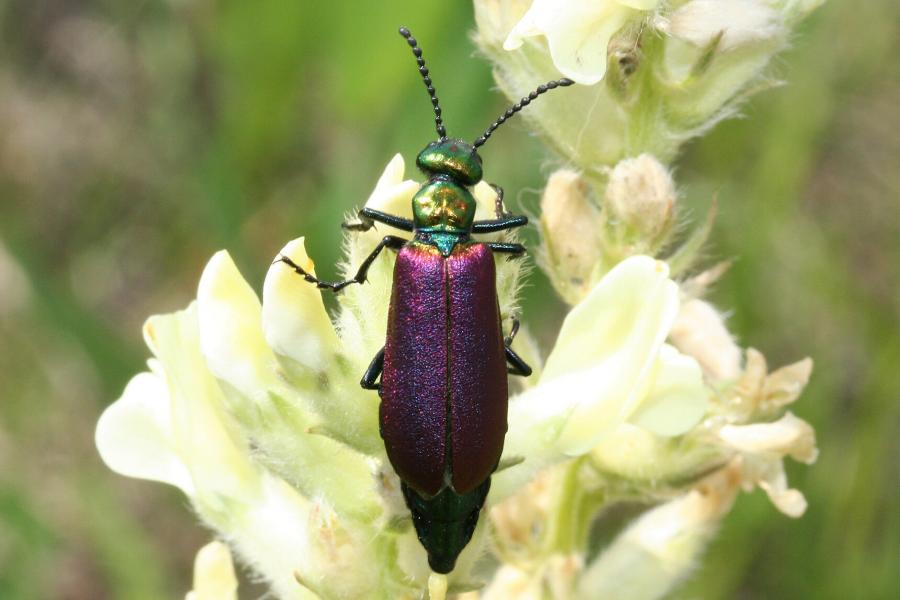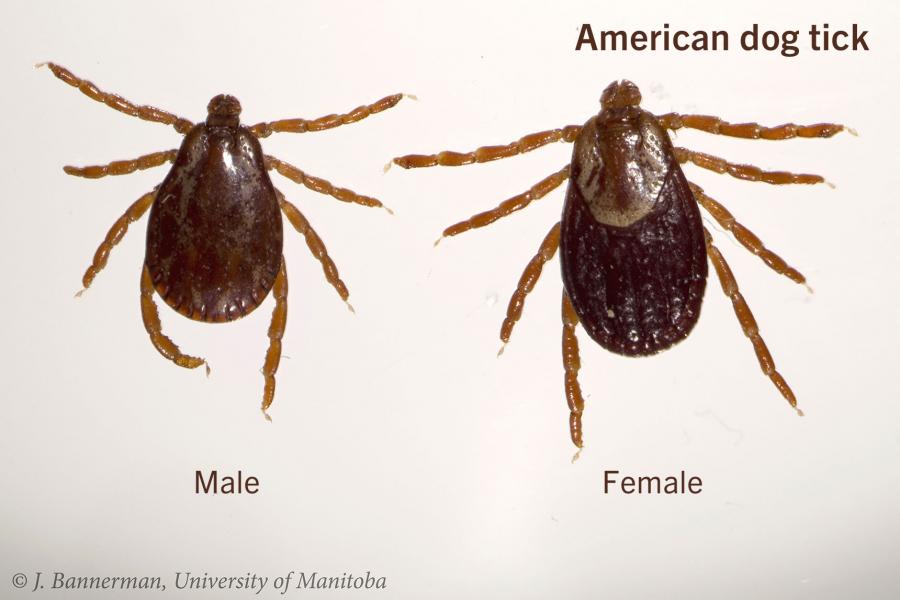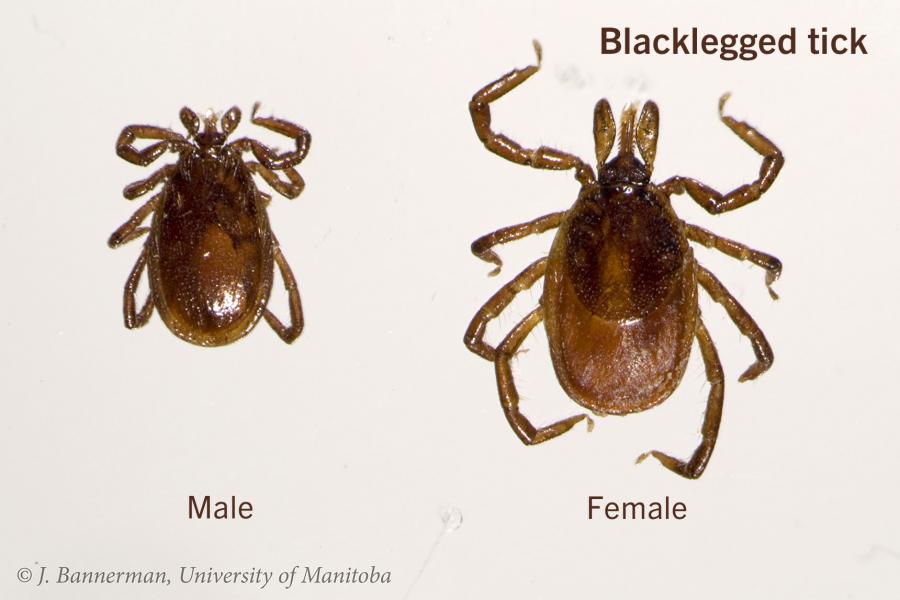The Bugline deals with a large volume of requests for insect identification and information, often there is ample information available online to assist with the identification of common insects and spiders. We strongly support attempting to identify specimens prior to considering submission.
Bugline insect identification service
The Department of Entomology at the University of Manitoba provides basic insect identification and insect information to Manitoba residents via the Bugline.
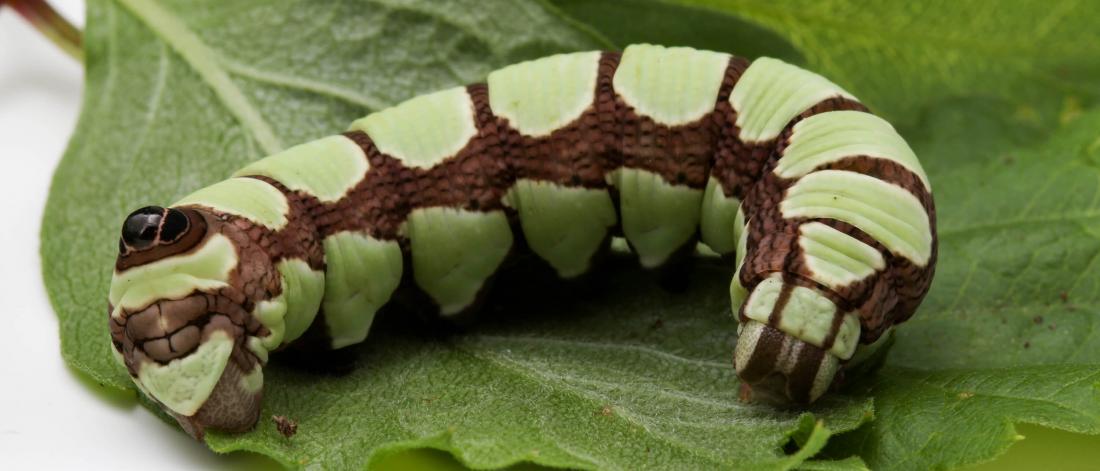
There are two ways to contact the Bugline with insect related questions. For non-urgent inquiries, e-mail is the preferred method of communication. Please keep inquiries as specific and concise as possible to reduce response times.
- Bugline email
- Phone: 1-204-474-9257 (Leave your name, phone number, and reason for inquiry)
Specimen and photo submissions for identification
If you would like to submit an insect specimen or photo for identification, please refer to the submission instructions below. Please attempt to provide complete, concise information with your submission. Response times vary depending on submission volume and time of year.
Submission instructions for photographs
Insect photos can be submitted for identification electronically to bugline@umanitoba.ca. Unless alternative means are requested, all responses will be sent to the e-mail used for the original photo submission.
In addition to attached photo(s), please provide the following information in the e-mail:
- Include INSECT PHOTO ID in the subject line.
- Your name and city of residence.
- The location and time the photograph was taken (as detailed as possible).
- The approximate size of the organism (if photo lacks a size reference).
- Any other specific information that you would like regarding the insect in question.
Tips for taking better insect photos:
- Don't be afraid to take multiple photos, but please send only the best ones.
- For small insects, take the photo from the closest distance your camera will allow you to focus at (it may take several tries). Most cameras, including on phones, will have a macro mode which makes photographing small objects much easier.
- Ensure the body of the insect is in focus rather than the legs or background.
- Include a size reference like a coin or a ruler.
- Ensure lighting is adequate, particularly for dark-coloured specimens.
- Shriveled, squished, or otherwise compromised specimens do not make good photo subjects for identification.
Submission instructions for specimens
Insects may be submitted for identification to the Department of Entomology. Unless alternative means are requested, all responses will be sent to the e-mail provided with the submission.
Include the following information with your insect submission:
- Your name and city of residence.
- Your e-mail address and phone number.
- The location and time that the specimen was collected (as detailed as possible).
- Any other information that would assist in the identification.
Specimens should be mailed to:
Bugline
Department of Entomology
University of Manitoba
214 Animal Science/Entomology bldg.
12 Dafoe Rd.
Winnipeg Manitoba, R3T 2N2
Specimens can also be dropped off in person at:
201 Animal Science/Entomology Building
12 Dafoe Road
University of Manitoba (Fort Garry Campus)
Winnipeg, MB R3T 2N2 Canada
Tips to make sure your specimens arrive intact:
- Never place insects directly into an envelope without protecting them in some way.
- Small insects (e.g. bed bugs, lice) can be placed into a small ziplock bag and placed into an envelope.
- Hard bodied insects (e.g. beetles) should be placed into a small, rigid container.
- Soft bodied insects (e.g. caterpillars, maggots) should be preserved in a sealed container filled with isopropyl (rubbing) alcohol.
- Please do not send live specimens through the mail; most insects can be killed by placing them into a freezer for one day.
Want to identify it yourself?
Useful websites devoted to insect identification and/or information:
-
Bugguide.net
User driven insect identification website hosted by Iowa State University Entomology
-
iNaturalist.org
Post your photos and crowdsource an identification
-
Insectidentification.org
Dichotomous key to determine what kind of insect you have
-
Amateur Entomologists' Society
Dichotomous key for adult insects
-
Discoverlife.org
Interactive key for adult insects (requires basic knowledge of insects)
-
Manitoba Agriculture pest fact sheets
Manitoba Agriculture, Food and Rural Initiatives webpage
Tick, bed bug, and mosquito information
Ticks
Ticks in Manitoba:
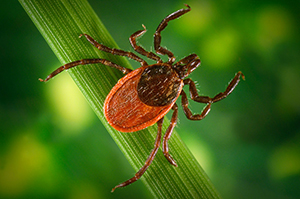
Ticks are just a fact of life here in Manitoba; they come with spring, just like pollen and allergies. Although there are approximately forty species of ticks found in Canada, Manitobans are most likely to encounter two. The first is the American dog tick, also known as the wood tick (scientific name, Dermacentor variabilis). The other species is the blacklegged tick, also known as the deer tick (scientific name, Ixodes scapularis). Although both species have established populations in the province, the American dog tick is far more abundant and has a distribution that stretches further north than the blacklegged tick. Of these two species, in Manitoba, only the blacklegged tick is of medical importance. The blacklegged tick is a known vector of Borrelia burgdorferi, the causative agent of Lyme disease, along with microbes that cause human granulocytic anaplasmosis and babesiosis. In Manitoba, the occurrence of both the tick and these pathogens is still relatively rare; however, surveillance programs are in place to monitor their presence.
Important links:
- Lyme disease fact page – Public Health Agency of Canada
- Lyme disease and tick identification – Manitoba Health
Tick identification:
Although it takes a trained individual to see the minute distinctions between some tick species, separating the more common American dog tick (also known as the wood tick, Dermacentor variabilis) from the blacklegged tick (also known as the deer tick, Ixodes scapularis) is easily done with the naked eye.
The most obvious distinction is the size. American dog ticks tend to be larger than the blacklegged ticks, although size may vary among individuals and can change dramatically after a long feeding period. Unfed adult American dog ticks range from 4 to 6 mm while unfed adult blacklegged ticks range from 3 to 5 mm in length. Female ticks are usually slightly larger than male ticks.
Another distinction is the colouring. The dorsal surface of ticks is covered by a hard shield called scutum. The backs of male ticks are completely covered by the scutum while the backs of female ticks are only partially covered with the scutum; this allows them to expand when they feed on blood. The scutum of the American dog tick has ornate white markings spanning it. The blacklegged tick lacks these markings and has a dark chocolate coloured scutum and legs.
Prevention and additional information:
The best way to prevent being bitten by a tick is to not enter their environment. Unfortunately, this would prevent us from enjoying some of Manitoba’s most beautiful localities and enjoying our already all too short summers. Fortunately, there are some precautions we can take to allow us to venture into the great outdoors. Although it may not be the most fashionable approach, wearing pants tucked into socks and long-sleeved shirts tucked in at the waist will offer a first line of defense against ticks (you could wear gaiters over your tucked-in pants and look like a pro hiker). Light coloured clothing will make the ticks more visible, allowing you to remove them before they get attached. Additionally, applying a DEET based insect repellent may make you less desirable to ticks. Perhaps the most efficient prevention method is to thoroughly check yourself, your family, and your pets for ticks at the end of any outdoor excursion, keeping in mind that ticks tend to feed in places where they have a low probability of being seen.
For those who live in more rural areas, it is also possible to make your property less appealing for ticks. Making the perimeter of your yard less friendly to rodent by keeping grasses short will help. Use of cedar chips in flowerbeds and shrubberies can repel ticks along with other pests. Finally, daily grooming of outdoor pets or use of a pet friendly insecticide treatment will prevent your four-legged friends from bringing home some unwanted guests.
It takes a significant amount of time for pathogens to be transmitted by feeding ticks, so if you encounter a tick that is attached to you or your pet you should promptly remove it. Removing ticks should only be done using a pair of tweezers or perhaps your fingers. Grasping the tick at the base of the skin and gently pulling it away without twisting or yanking is the most effective method (How to properly remove a tick). Treating the bite with an antiseptic as you would any scrape or cut will promote healing. It is a good idea to note the site of the tick bite and when you discovered the tick. If serious discomfort or a rash occurs, this information will assist your doctor in determining what treatment options to pursue. Do not use fire, grease, irritants, pesticides, or other ointments to remove ticks. These methods are ineffective at removing the tick, could cause secondary infections and may result in part of the tick remaining in the bite site.
Bed bugs
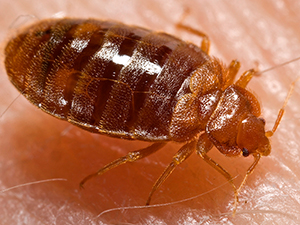
Although bed bugs do not transmit diseases to humans, their recent resurgence in cities across North America has once again made them prominent human associated pests.
The following websites provide Manitoba-relevant bedbug and bed bug control information:
- What you should know about bed bugs – Manitoba Health
- Bed bugs – Health Canada
- Bed bugs fact sheet – Manitoba Health
- Bed bug information – Pestworld.org
Mosquitos and their control
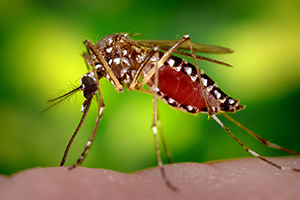
The following websites provide Manitoba-relevant mosquito and mosquito control information:
- Mosquito control around the home – Health Canada
- Winnipeg mosquito control – City of Winnipeg
- Protect yourself from West Nile Virus – Manitoba Health
- West Nile Virus - protect yourself – Public Health Agency of Canada
- Controlling mosquitoes on farms and rural properties – OMAFRA

